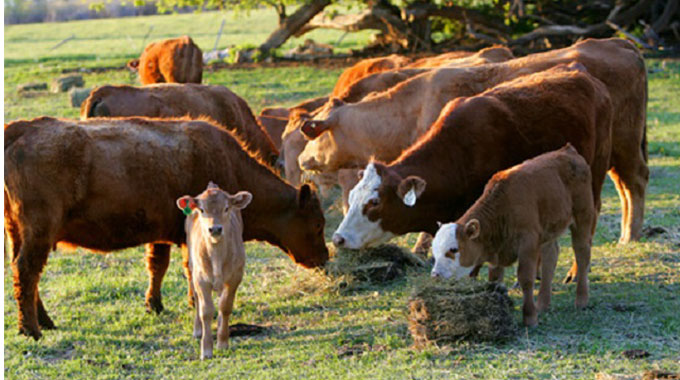
The Sunday News

TWO important aspects to consider regarding your rangeland are its carrying capacity against the stocking rates that are obtaining. While most smallholder livestock farmers do not pay attention to these two important concepts of rangeland management, they often pay the price through costs of supplementary feeds, troubles of finding relief grazing or poverty deaths of their animals.
It is also important to mention right away that these are sensitive issues especially in communally-owned grazing areas as there tends to be accusations and counter accusations between those with fewer livestock units and those with many, with the former accusing the latter of depleting the communally-owned grazing through running massive herds.
Sadly, not many farmers would be talked into downscaling their herds especially in a communally-owned grazing area. In fact, it’s a subject which when brought up stirs emotions especially from the older generations that lost animals to the repressive colonial regimes through forced destocking exercises. Nonetheless it is beneficial to unpack these two most important parameters of rangeland management.
Carrying capacity describes the number of grazing animals an area can support without depleting rangeland vegetation or soil resources. Carrying capacity reflects the average level of sustainable production over the long-term. Carrying capacity is how many animals your pasture can support in a period of time and this is usually a year.
The carrying capacity is the maximum stocking rate possible that is consistent with maintaining or improving forage and other vegetation and related resources. It can vary from year to year in the same area due to changes in forage production. It is expressed as the number of livestock units you can graze for a specific period.
A livestock unit is five hundred kilograms of animal weight, so it can be one animal, two animals or one-and-a-half animals depending on their weights. Determining carrying capacity is a fundamental component of rangeland evaluation, because it is an important management tool that connects forage supply and forage consumption.
Evaluating carrying capacity is an important application of rangeland management principles because it helps management decision in terms of action that needs to be taken to either maintain or decrease stocking rates.
Monitoring trends in carrying capacity and stocking rates can often form the basis for changes in livestock management.
For example, a decline in carrying capacity is usually interpreted as an indicator of poor resource management and a typical response would be to determine a carrying capacity that would improve range condition.
It is important to note that carrying capacity of a grazing area will vary from time to time and one area to another due to a number of factors such as amount of rainfall received, number of animals grazing and the general topographic differences.

It is important to note that carrying capacity of a grazing area will vary from time to time and one area to another due to a number of factors such as amount of rainfall received
On the other hand, stocking rate is defined as the number of livestock units that are grazing or using the land in a certain period. In other words, a stocking rate is a management number used to decide how many cattle to put on the pasture and for what period. Instead of viewing stocking rate and carrying capacity as fixed numbers, adaptive grazing management considers these as variables that change over the season.
Establishing the correct stocking rate is critical in optimising forage performance and maintaining animal performance while ensuring the sustained health and production of the grassland resources.
Factors affecting stocking rates include; owner’s or operator’s management goals, animal species (cattle, sheep, horses, etc.), class of livestock (dry cow, lactating cow, bull, steer, et cetera), the number of acres available for the grazing season, rainfall (dependability, amount, and timing), topography, soils/ecological sites, livestock water (quantity, quality, and distribution), forage species composition.
However, a simple nexus between stocking rates and carrying capacity is that the higher the stocking rates, the lower the carrying capacity of the area. In simple terms if you put too many animals in a particular area, you will deplete the grazing faster and reduce the carrying capacity of that particular area.
It is therefore important to always find a balance between the number of animals you want to raise in a particular area and what that particular area is able to carry over a period of a year, or else you will find yourself out of grazing area right in the middle of the dry season and carrying those animals till the rains fall becomes a huge burden and you may actually lose some of your animals to poverty deaths.
A properly managed relationship between the carrying capacity of the unit and the stocking rates will ensure that your animals maintain a good body condition score throughout the year and this translates to improved conception rates, calving rates and weaning percentages. In short, the productivity of your production unit is improved by always keep an eye on the balance between these two important parameters of rangeland management.
Uyabonga umntaka MaKhumalo.
n Mhlupheki Dube is a livestock specialist. He writes in his own capacity. Feedback [email protected]/ cell 0772851275



